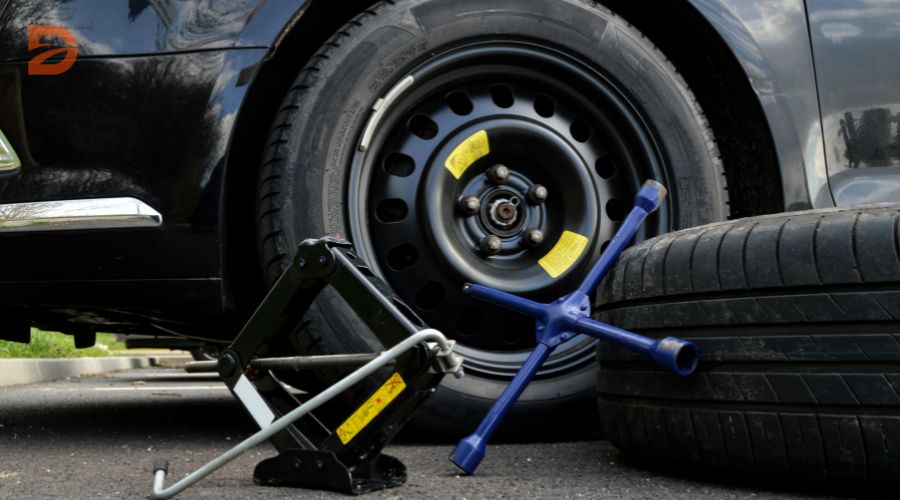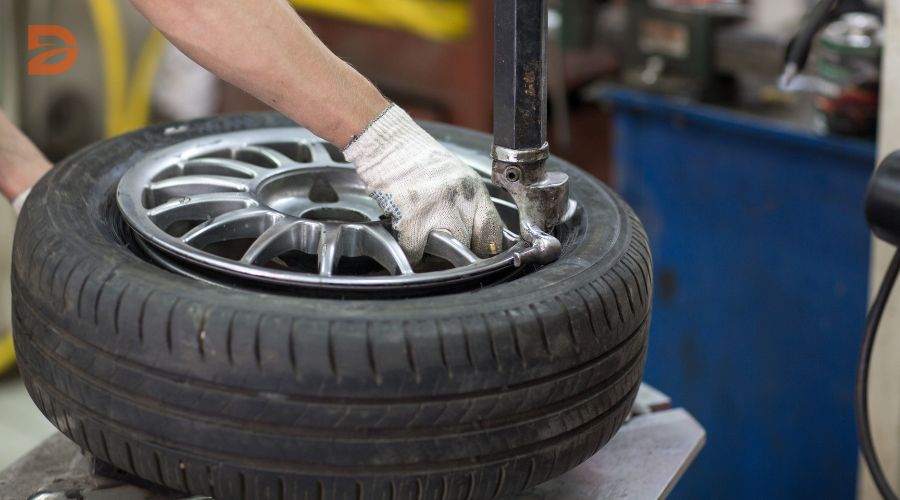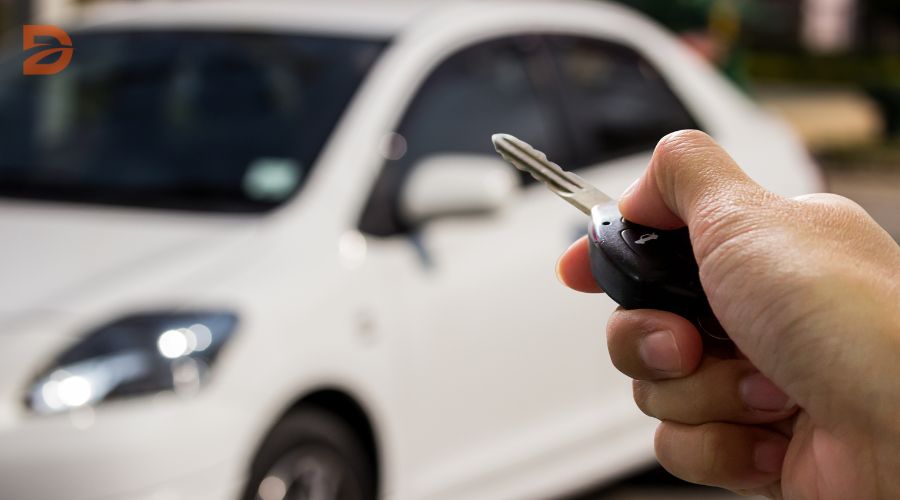How often do you think about the health of your tires? If you’re like most drivers, the answer is probably “not often enough.” But the truth is, proper tire maintenance is crucial for extending the life of your tires, improving safety, and saving you money in the long run.
From checking your tire pressure to rotating your tires and keeping them balanced, there are several simple steps you can take to ensure your tires stay in top condition. But are you aware of just how much of a difference these maintenance practices can make?
Key Takeaways
- Monthly tire pressure checks can enhance safety, and efficiency, and prolong tire life.
- Maintaining recommended tread depth can improve stopping distance by up to 24% on wet pavement.
- Tire rotations every 5,000-7,000 miles optimize performance and longevity.
- Proper wheel balancing prevents uneven wear and extends tire lifespan.
- Wheel alignment issues lead to irregular tire wear, so it should be checked regularly.
The Importance of Proper Tire Maintenance
Maintaining your tires in optimal condition is crucial for ensuring your safety, improving fuel efficiency, and extending the lifespan of your vehicle’s most crucial components. From proper inflation to regular rotation and alignment, a few simple steps can make a significant difference in your driving experience.
Improved Safety and Fuel Efficiency
Proper tire inflation is critical for safety, as underinflated tires can lead to reduced fuel economy, while overinflated tires compromise handling and traction. Maintaining the correct tire pressure not only enhances performance but also improves fuel efficiency by up to 3.3%.
Worn-out tires with inadequate tread depth pose a serious risk, especially in adverse weather conditions. Regularly rotating your tires and keeping them properly aligned ensures even wear, providing better grip and handling for improved control and safety on the road.
Cost Savings and Longevity
Neglecting tire maintenance can lead to alignment issues, suspension problems, and expensive repairs down the road. Trusting experienced technicians for comprehensive tire inspections, pressure checks, and rotations can ensure safety, performance, and cost savings in the long run.
By following a regular tire maintenance schedule, you can extend the life of your tires, reducing the need for costly replacements and maximizing your investment. Properly inflated tires with adequate tread depth provide better fuel efficiency and a smoother ride, ultimately saving you money at the pump and on maintenance costs.
Tire Pressure: The Key to Optimal Performance
Maintaining the proper tire pressure is crucial for your vehicle’s optimal performance and safety. Tire pressure can fluctuate with temperature changes and gradually decrease over time, so it’s important to check it regularly. Underinflated tires can reduce your fuel efficiency, increase wear and tear, and heighten the risk of a blowout, while overinflated tires can lead to uneven treadwear.
According to industry data, for every 10 degrees Fahrenheit increase in temperature, tire pressure can increase by approximately 1 PSI. Under-inflated tires can reduce fuel economy by up to 3%, and rotating tires every 5,000 to 8,000 miles ensures even wear and extends their lifespan. Under-inflation can also generate more heat due to increased friction, leading to an increased risk of blowouts.
To ensure your tires are inflated to the vehicle manufacturer’s recommended levels, it’s essential to check the pressure at least once a month and before long trips. Many modern vehicles come equipped with a Tire Pressure Monitoring System (TPMS), but not all provide real-time pressure readings. Regular tire rotation, balance, and alignment checks are also vital for even tire wear and extended tire life.
| Tire Pressure Impacts | Underinflation | Overinflation |
|---|---|---|
| Fuel Efficiency | Up to 3% reduction | Minimal impact |
| Treadwear | Increased wear on the edges | Excessive wear in the center |
| Handling and Traction | Reduced traction | Reduced traction |
| Tire Life | Shortened lifespan | Shortened lifespan |
| Safety Risks | Increased risk of blowouts | Increased risk of punctures and damage |
By keeping your tires properly inflated, you can extend their life, improve your vehicle’s fuel efficiency, and enhance overall safety on the road. Regular tire maintenance is a simple and cost-effective way to ensure your vehicle performs at its best.
“Tire repair, tire maintenance” Best Practices
Maintaining the health of your tires is crucial for ensuring a smooth and safe driving experience. Two key practices that can significantly extend the life of your tires are regular tire rotation and proper wheel alignment and balancing.
Regular Tire Rotation
Regularly rotating your tires every 5,000 to 8,000 miles helps equalize treadwear across all four wheels. This is particularly important for the tires on your drive wheels, which tend to wear faster due to the additional stress they experience. By rotating your tires, you can ensure even treadwear and maximize the overall lifespan of your tire investment.
Wheel Alignment and Balancing
Proper wheel alignment and balancing are crucial for maintaining optimal tire performance and fuel efficiency. Misaligned wheels can cause uneven treadwear, leading to premature replacement. Additionally, unbalanced wheels can result in vibration and additional strain on the tires, leading to accelerated wear. By addressing any alignment or balancing issues, you can keep your tires in peak condition and enjoy a smoother, more comfortable ride.
To ensure the best possible tire repair and maintenance services, it’s recommended to work with certified tire technicians. Look for professionals who have earned Tire Industry Association (TIA) or National Institute for Automotive Service Excellence (ASE) certifications, as well as those with extensive experience and a track record of quality workmanship.
| Preventative Maintenance Benefits | Potential Savings |
|---|---|
| Reduced labor hours for repairs | 3 to 8 hours for every 1 hour spent on maintenance |
| Lower overall operating costs | Properly maintained vehicles have lower costs |
| Fewer emergency repair requests | Preventative maintenance helps avoid breakdowns |
By following these best practices for tire repair and maintenance, you can extend the lifespan of your tires, enhance your vehicle’s performance, and enjoy a safer, more cost-effective driving experience.
Protecting Your Tires: Tips for Avoiding Damage
Maintaining the health and longevity of your tires is crucial for ensuring a safe and efficient driving experience. By taking proactive steps to protect your tires, you can avoid costly repairs and premature wear. Let’s explore some valuable tips to safeguard your tires and keep them performing at their best.
One of the most important factors in tire protection is addressing any issues promptly. If you encounter a flat tire or notice a leak, it’s essential to have it repaired or replaced immediately. A single damaged tire can negatively impact the others, leading to uneven wear and decreased performance.
Proper maintenance of your vehicle’s brakes and suspension components is also crucial for tire protection. These systems directly affect the loads placed on the tires, and any issues can lead to uneven wear or even tire damage. Regular inspections and timely repairs can help ensure your tires operate in a balanced and stable environment.
Additionally, adhering to recommended tire rotation schedules can significantly extend the lifespan of your tires. Regular tire rotation promotes even tread wear and improves traction, braking, and handling. It’s generally recommended to rotate your tires every 5,000 miles, regardless of your vehicle’s drivetrain.
Maintaining the correct tire pressure is another crucial aspect of tire protection. Under-inflated tires wear down faster and unevenly, damaging the tread and shortening tire lifespan. Conversely, over-inflated tires can lead to uneven tire wear and a higher risk of blowout. It’s recommended to check your tire pressure once a month and before long drives to ensure optimal performance.
Finally, using the appropriate tires for the season and driving conditions can also contribute to the longevity of your tires. Summer tires are not designed for temperatures below 45 degrees, which decreases traction and safety levels. Conversely, winter tires are not recommended for temperatures above 45 degrees, causing increased wear. By using the right tires for the right conditions, you can protect your investment and ensure safe, reliable driving.
By implementing these tire protection strategies, you can extend the lifespan of your tires, improve overall vehicle performance, and maintain a safe, efficient driving experience. Investing in proper tire maintenance is a wise decision that pays dividends in the long run.
Conclusion
In conclusion, the data presented highlights the vital importance of proper tire maintenance for extending the lifespan of your tires and ensuring optimal vehicle performance. Key steps include regularly checking and maintaining the correct tire pressure, rotating tires, getting wheels aligned and balanced, and promptly addressing any tire damage or issues.
By following these essential maintenance practices, you can improve your vehicle’s safety, and fuel efficiency, and save money in the long run by delaying the need for new tire replacements. Regularly inspecting tread depth, using the penny test, and replacing tires when the minimum recommended depth is reached are also crucial for maintaining your vehicle’s handling, stability, and road safety.
The experts at Creech Import Repair recommend a tailored tire rotation schedule based on your specific drive type, as well as utilizing advanced diagnostics to identify and address any Tire Pressure Monitoring System (TPMS) issues accurately. Their comprehensive tire services prioritize tire longevity, safety, performance, and fuel efficiency for an optimal driving experience.
FAQ
Why is proper tire maintenance important?
Proper tire maintenance is essential for extending the lifespan of your tires. Key tips include checking your tire pressure monthly, rotating your tires every 5,000-8,000 miles, getting your wheels balanced, and checking your wheel alignment twice a year. Following these simple maintenance practices can improve your vehicle’s safety, and fuel efficiency, and save you money in the long run by delaying the need for new tires.
How does tire pressure affect vehicle performance and safety?
Maintaining the proper tire pressure is crucial for optimal vehicle performance and safety. Tire pressure should be checked monthly, as it can fluctuate with temperature changes and gradually decrease over time. Underinflated tires can reduce fuel efficiency, increase wear and tear, and heighten the risk of a blowout, while overinflated tires can lead to uneven treadwear.
What are the best practices for tire repair and maintenance?
Regularly rotating your tires every 5,000-8,000 miles helps equalize treadwear, as the tires on drive wheels typically wear faster. Additionally, getting your wheels aligned and balanced is crucial. Misalignment can cause uneven treadwear and reduced fuel efficiency, while unbalanced wheels can lead to vibration and premature tire wear.
How can I protect my tires and avoid damage?
Addressing flat tires or leaks promptly is important, as a single damaged tire can negatively impact the others. Additionally, maintaining healthy brakes and suspension components is crucial, as these systems directly affect the loads placed on the tires. By taking proactive measures to safeguard your tires, you can prevent premature wear and extend their overall lifespan.











